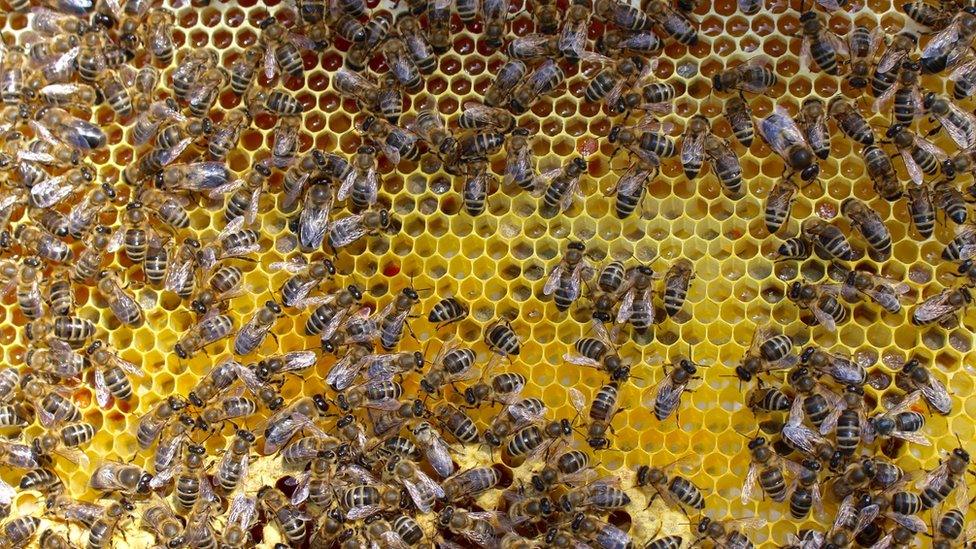Honey detective work raises fears for bees
- Published

Brambles are a big source of food for honeybees
DNA detective work on honey has given a rare insight into the foraging habits of honeybees.
Scientists used genetic tools to discover which plants the pollinators visited in the countryside.
They compared this with a study from 1952, finding big shifts in the wildflowers available to bees.
In the 1950s, honeybees mainly gathered pollen and nectar from white clover. Today, there is not so much of this plant about, so they seek alternatives.
These include oilseed rape and Himalayan balsam.
And there are fears that honeybees and other vital pollinators are running out of food supplies as wildflowers disappear in hedgerows and fields.
"We've seen these major changes in the UK landscape and the honeybees have shown us that from their honey samples," Dr Natasha de Vere, head of conservation and research at the National Botanic Garden of Wales, told BBC News.
She said the agricultural systems of today didn't have enough nectar for pollinators, with much of the habitat for bees being grasslands, which are a "kind of green desert".
"There's nothing that really flowers within those pastures anymore, whereas in the 1950s, those pastures would have been full of white clover and other wildflowers as well."

White clover was the top food source in 1952
To come up with their findings, the researchers analysed hundreds of honey samples sent in by beekeepers up and down the country, following an appeal on the BBC TV programme Gardeners' World.
These were analysed by DNA barcoding, where fragments of plant DNA are identified in pollen trapped in honey.
The historic study also looked at pollen grains in honey, but different plants were identified by examining the structure of pollen under the microscope.
They found that white clover - the favourite source of nectar for honeybees in 1952 - is still important now but used a lot less as the plant is becoming more scarce.
Instead, honeybees have switched to bramble; oilseed rape, which started to be grown from the 1960s onwards; and Himalayan balsam, an invasive plant that has been spreading rapidly across the countryside.

Beekeepers sent in more than 400 samples from hives
The past few decades have seen a dramatic change in the UK landscape. Agricultural intensification after the WWII meant hedgerows and woodland were destroyed, field sizes increased and new crops grown.
Oilseed rape was first grown in the late 1960s, with a large increase in production in recent years.
Himalayan balsam, an invasive plant, has also increased in the landscape, especially along riversides and road verges. When honeybees are foraging on Himalayan balsam, they return to the hive with a whitewash of pollen covering their bodies, leading them to be called "ghost bees".
Recommendations from the research include:
Providing more flower-filled hedgerows with bramble margins and grasslands rich in wildflowers.
Changes to grasslands dominated by a small number of grass species, where there are few flowers to sustain pollinators. Providing white clover and other flowers in this habitat would improve nectar resources for honeybees and other pollinators.
The study, external is published in the journal Communications Biology.
Follow Helen on Twitter, external.